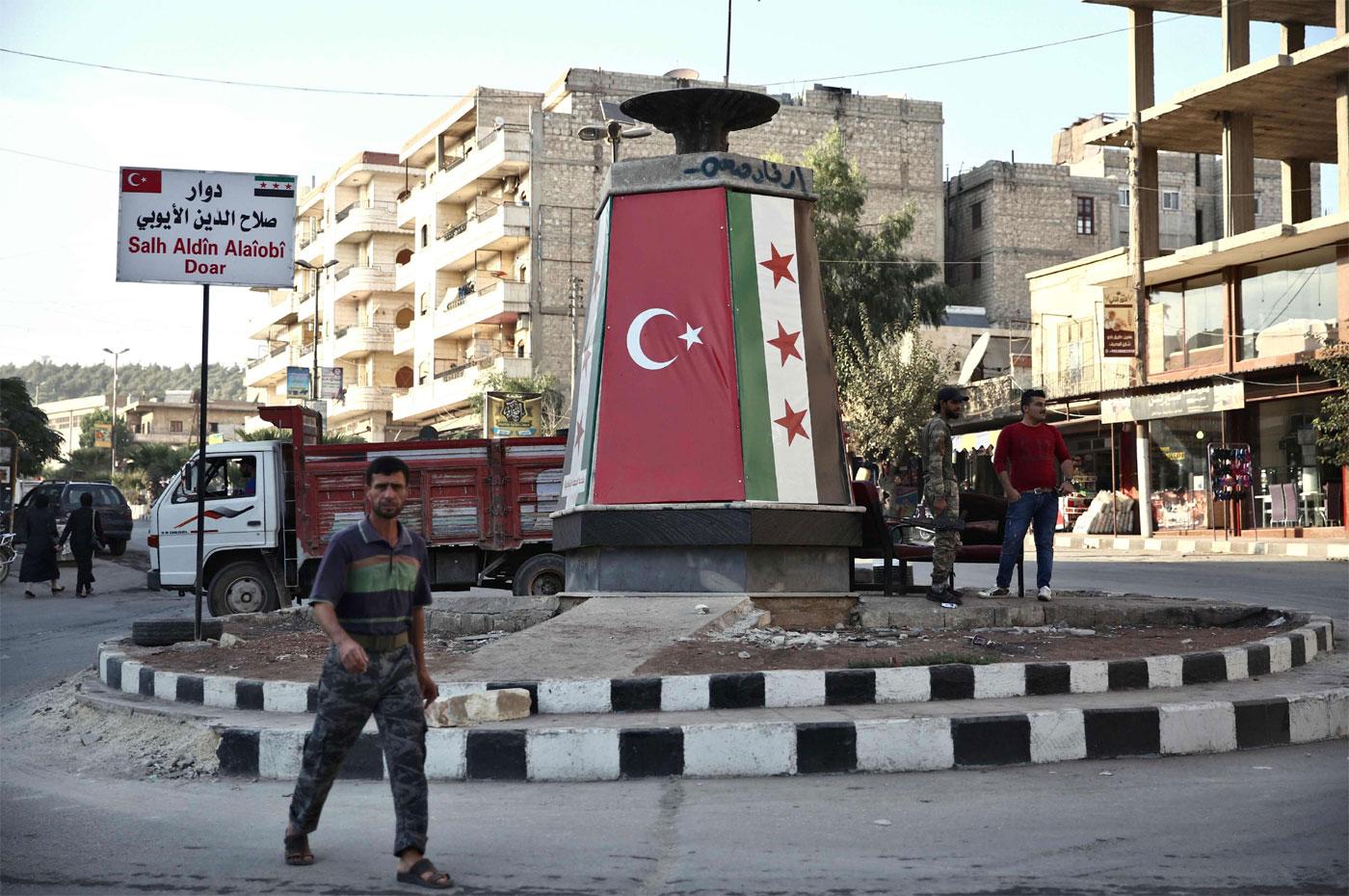Within mountainous area northwest of Syria, Afrin region covers an area of 4,000 square kilometers, which constitutes 2% of Syria distance . Agriculture is mainstay of economic life as it is one of most famous Syrian regions in olive growing, its consists of 18 million olives tress
During the Syrian war, Afrin, taking advantage of security stability in the first four years, achieved economic successes and carried out many vital projects to witness an economic and urban movement not seen throughout its history before 2012.
Syrian regime forces withdrew from Afrin in 2012, after that Kurdish city began to self-rule. It established an economic system based on self-sufficiency through building of an economic society based on cooperative societies, which provided the region with a continuous prosperity in several fields, began with agriculture getting Industrial and commercial.
Afrin region gained economic exclusivity due to several factors, the most important which was to distance itself from battle quagmire. This contributed to infrastructure preservation, especially facilities and public institutions previously occupied by official government, as well as its geographical location with Turkey. An intermediary zone for trade between areas under control of the opposition and others under control of regime’s forces, which greatly increased pace of their economic growth.
The Syrian Kurds held a conference in Afrin in October 2015, followed by another conference in the same month in Rumailan city in order to develop economic plan for areas under their control, which contributed to transfer about 50% of factories and industrial workshops from Aleppo destroyed city to Afrin, through Provide economic body for their needs. Afrin Chamber of Commerce and Industry, which attracted between 2012 and March 2018, attracted more than 450 traders and industrialists, according to Kawa al-Yousef, a member of economic board in Afrin, who fled to Hasakah with starting of military operations earlier this year.
For his part, member of Chamber of Commerce and Industry in Afrin, Luqman Rustam, said that size of industrial and commercial machine in Afrin region, noting that return of young Afrin workers they were working outside in Damascus, Aleppo and Lebanon, despite of some migration to Europe, formed a significant support in development and expansion of work Through transfer of their production and industrial expertise to labs and Afrin workshops.
Afrin was distinguished during her “economic rise” in production of laurel soap and its export to Syrian governorates in addition to Turkey. According to Luqman Rustam, production of laurel soap reached more than 35 tons in 2017, about 400 workshops and garment factories produce about 4 million jeans.
Rustam, who traveled to Germany, added that Afrin region included three oil refineries, 20 stone quarries and building materials as well as marble quarries.
On real estate front, Nigervan, a real estate broker in Afrin currently living in Kamishlou, said that real estate movement witnessed an unprecedented recovery through increase in demand for houses and apartments and commercial apartments, with Afrin region attracting thousands of Syrians Kurds and Arabs. 400,000 people, compared to 90 thousand in 2010.
According to Nigervan, wages of housing amounted to between six thousand and 25 thousand Syrian pounds, while rent for shops between 10 thousand and 180 thousand pounds, based on size and location and quality of commercial activity or industrial.
Operation “olive branch” .. “Our economy was hit”
The Turkish army, with participation of opposition factions backed by occupation of Afrin area, in mid-March, within process of “olive branch”, which began on 20 January this year.
Factories in Afrin area have been halted due to military operations, factories have been bombed, causing tens of thousands of jobs to be lost, according to Afrin Economic Council member Kawa al-Yusuf.
He also accused the Turkish army of destroying industrial structure estimated at millions dollars, loss of dozens of industrial facilities and machinery and equipment, noting that opposition factions “looted and stolen” about 60% of those facilities and laboratories, according to his estimated.
livestock in Afrin were also affected, in context of combat operations between two sides. Al-Yousef said that ferocity of fighting prevented the villagers from reaching and raising livestock.
They targeted Medanki dam, formerly called “17 April”, on Afrin River, which irrigates and feeds large areas of Afrin, whether by drinking water or irrigation for agricultural land, has caused damage by 60%, said to , Razan Shekhmous, Al a’anb albldi agency , a member of agricultural cooperative society .
Farmers inability to access their land to plow and fertilize them because of military operations, caused the loss of many farmers for their crops, to be another reason for people migration in Afrin to escape from missiles and battles, according to Razan.
The number of displaced from Afrin city exceeded 150 thousand displaced persons, some of whom fled to neighboring areas, while a few returned after end of operations “olive branch.”
A former lecturer at Faculty of Economics at Aleppo University ,he refused to mention his name, who is currently residing in Azaz city near Afrin, said that talk about gradual return of economic development to Afrin by Turkey is inaccurate, pointing out that Turkey is pushing for an economic ground that is not easy to achieve during next time period.
According to lecturer of Faculty of Economics, growth of economy needs primarily to understand and achieve sustainable development, which depends firstly on natural resources, and its backbone cooperative societies established by civil society and create environmental activities that increase income.
security conditions that formed cornerstone in Afrin region direction towards development of its economy and bringing investors and capital, is currently lacking.
Afrin reception thousands of displaced people coming from eastern Ghouta in Damascus countryside and from northern Homs countryside is another challenge, due to homogeneity lack in nature of structures of civil society or in political and social frameworks characteristics in which these structures operate, making any hasty attempt to draw general conclusions, distorting economic reality and foundations of its development.
